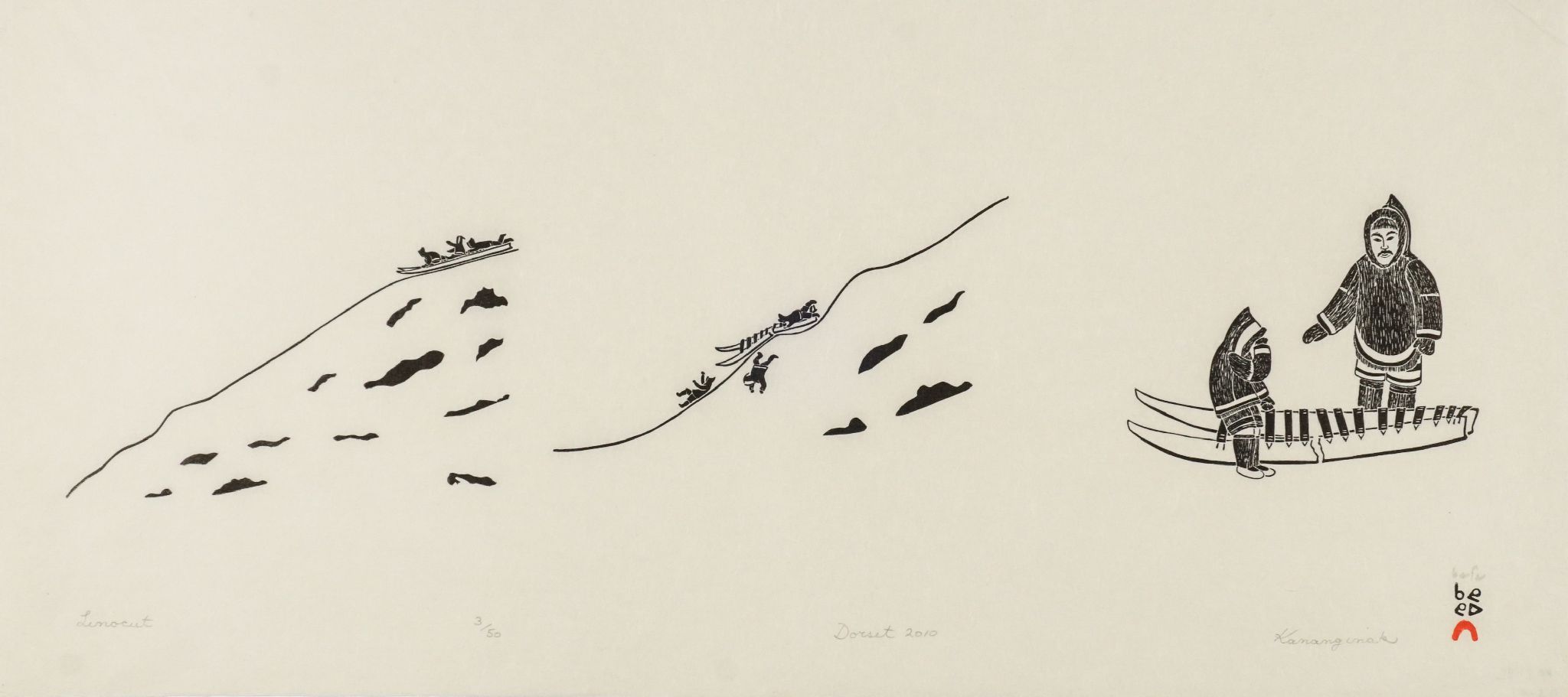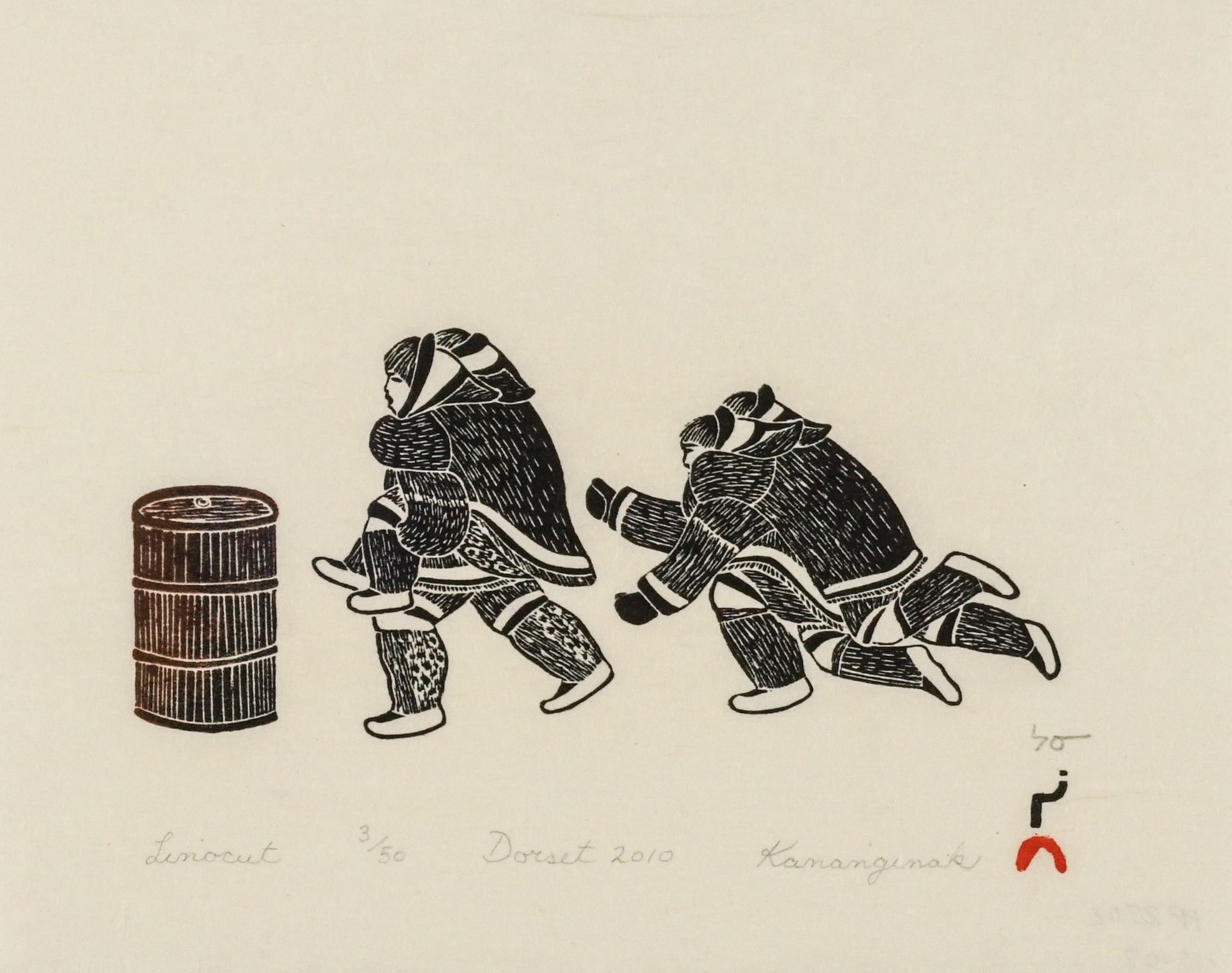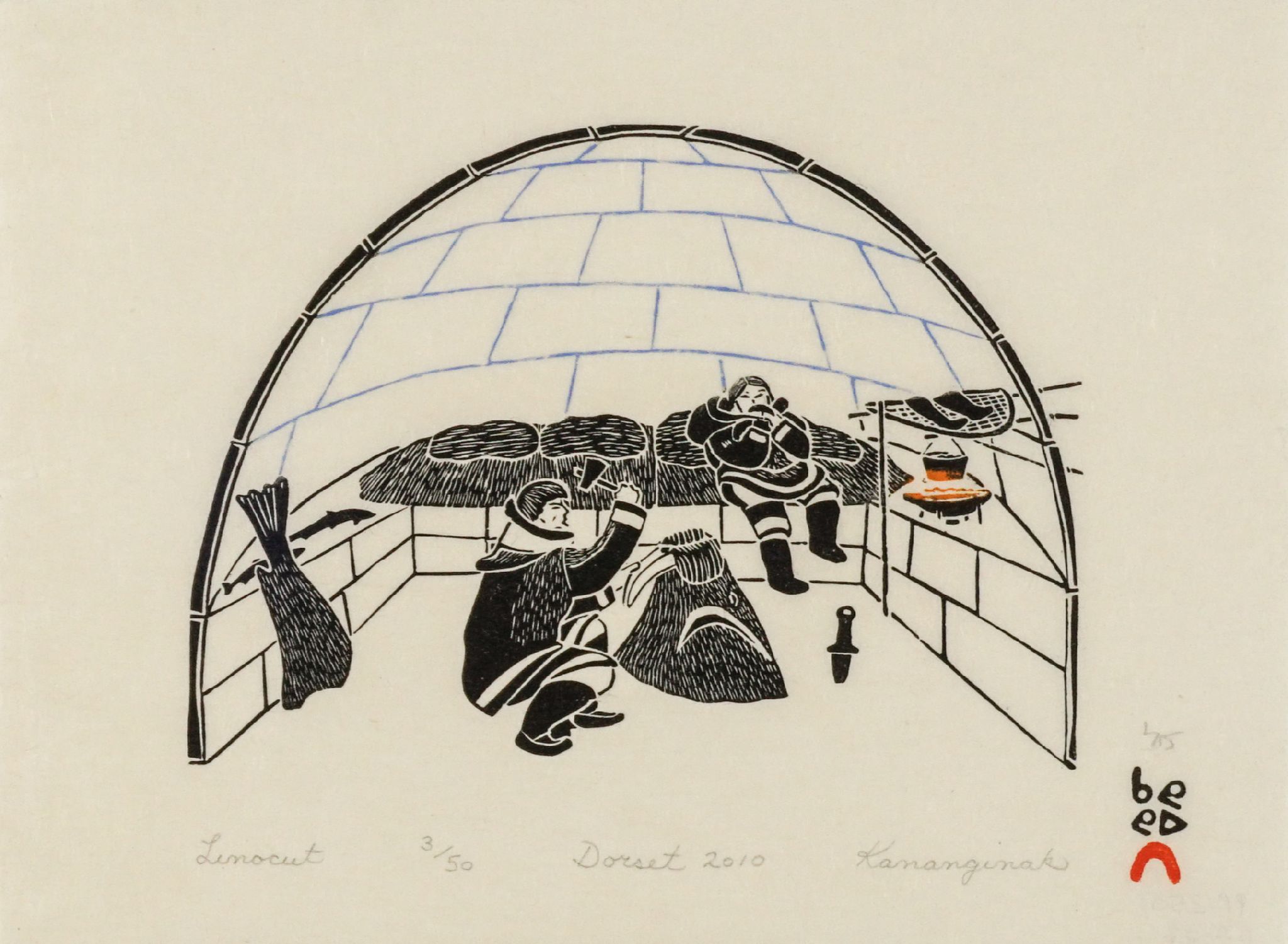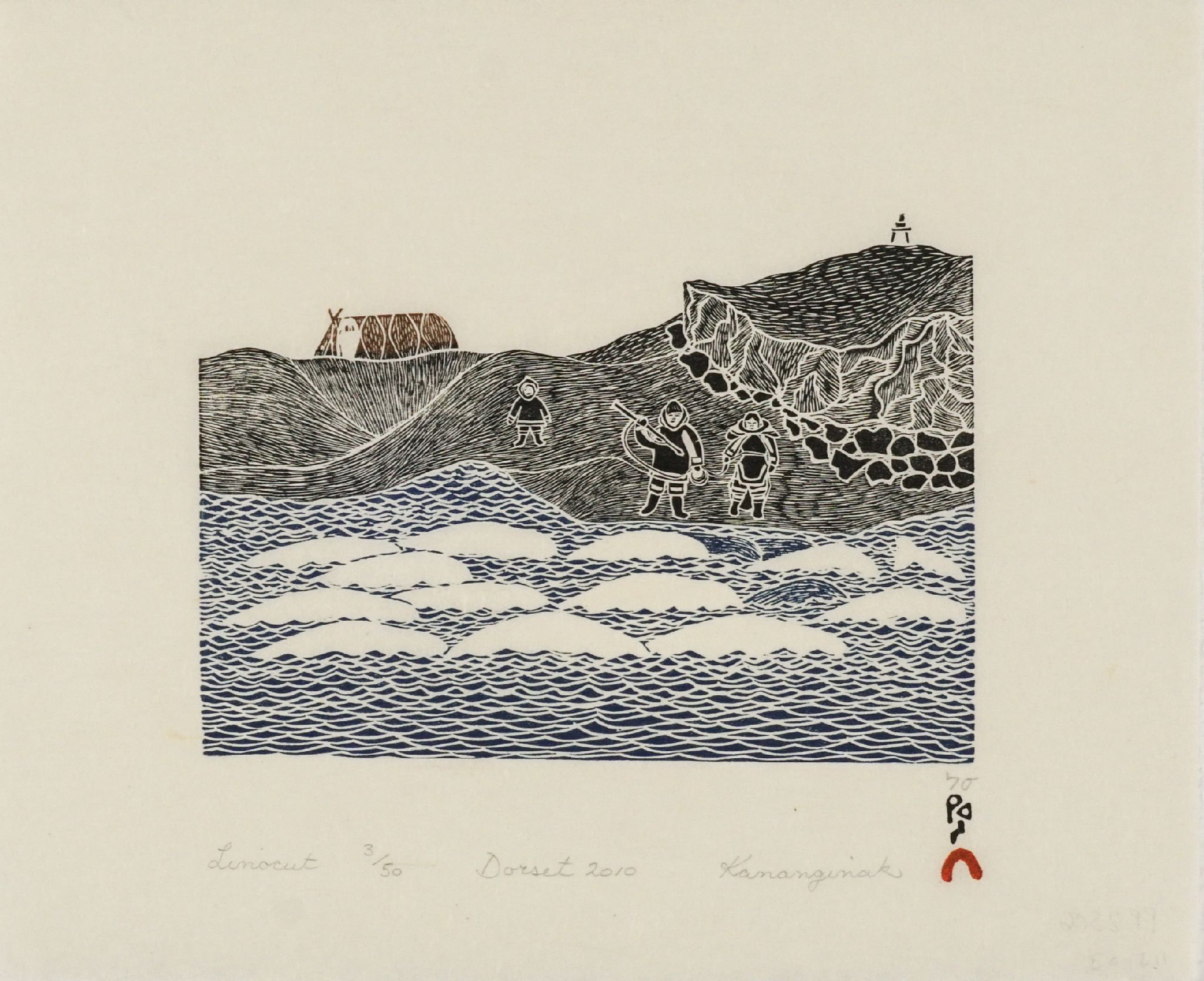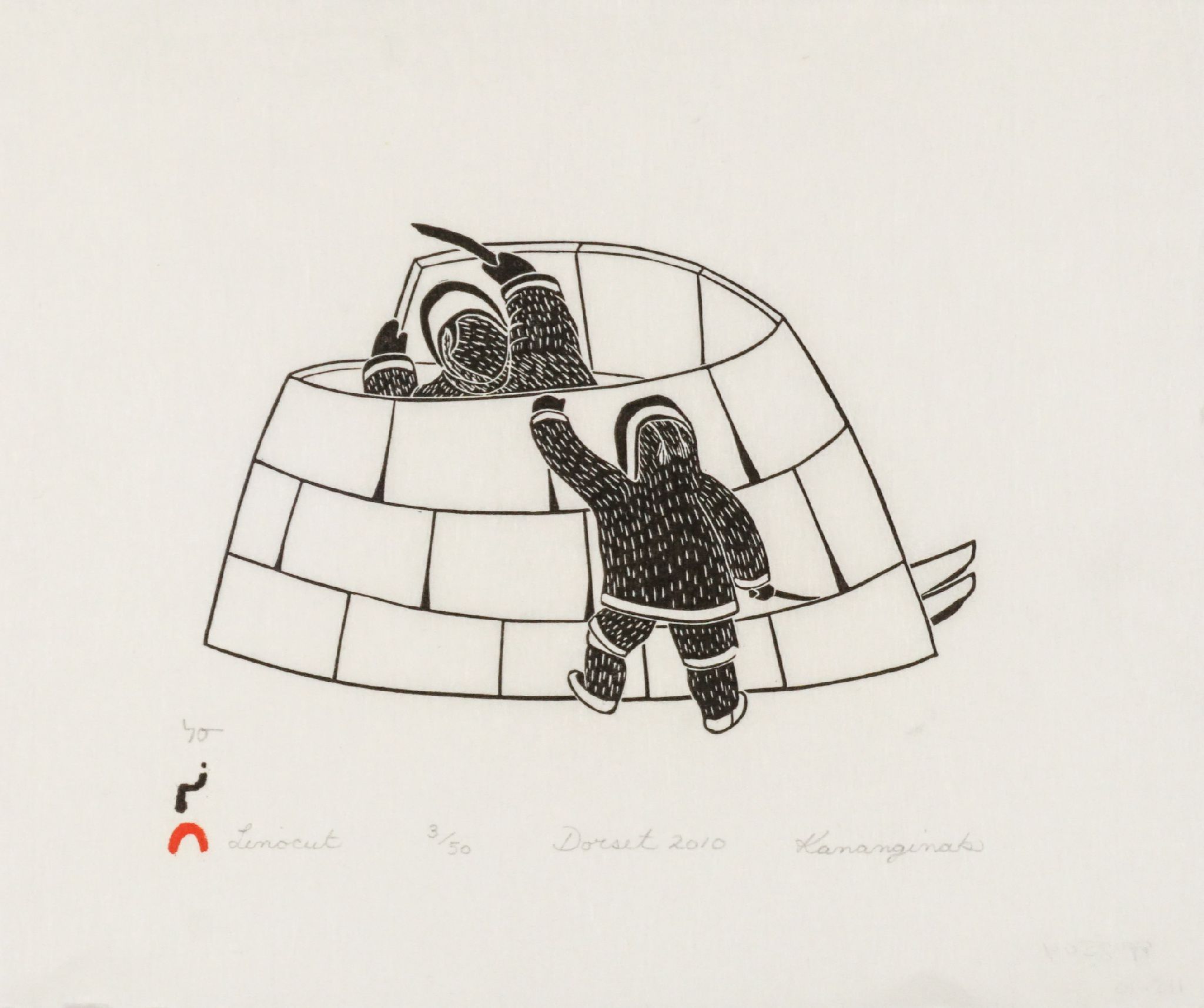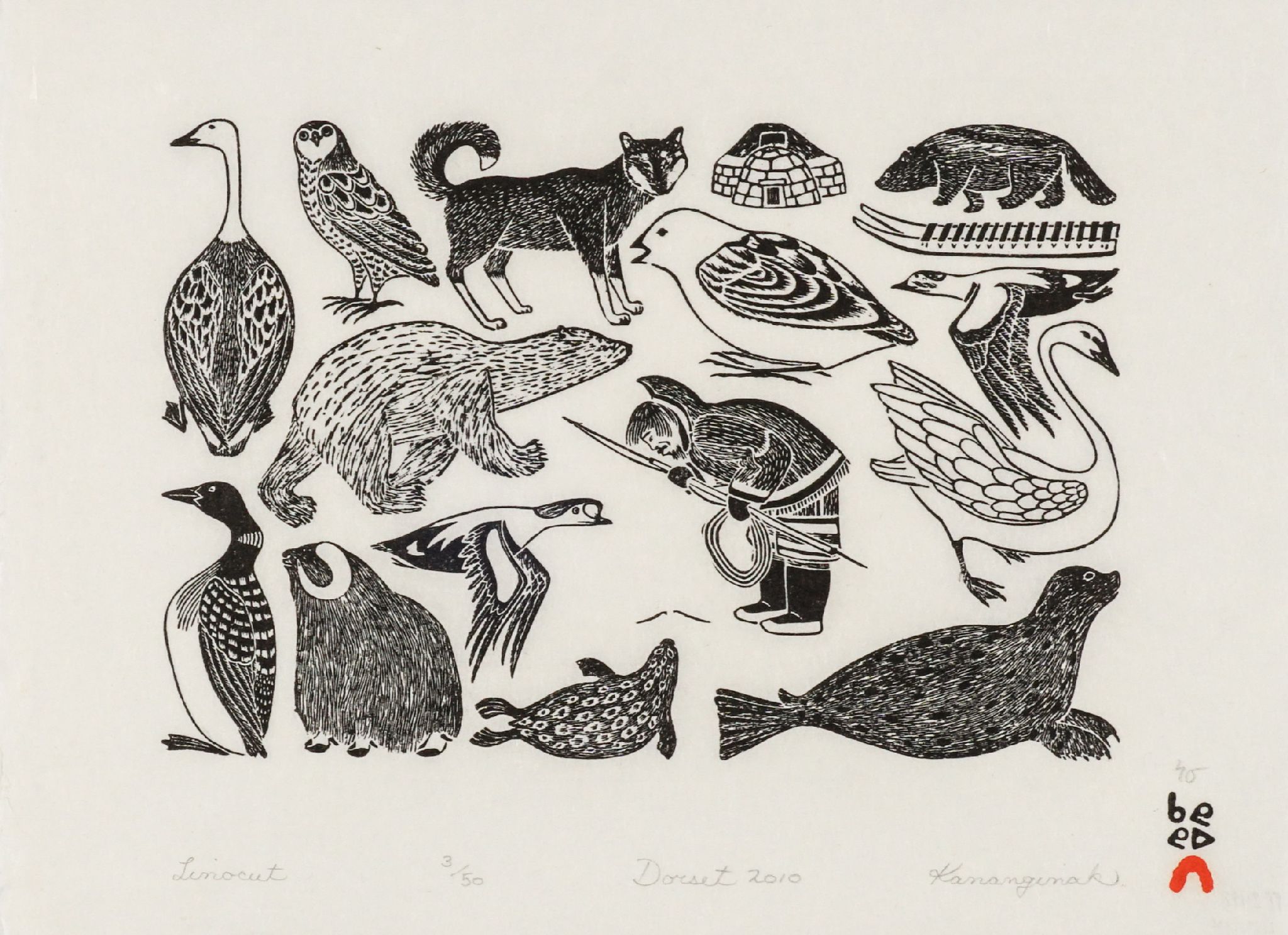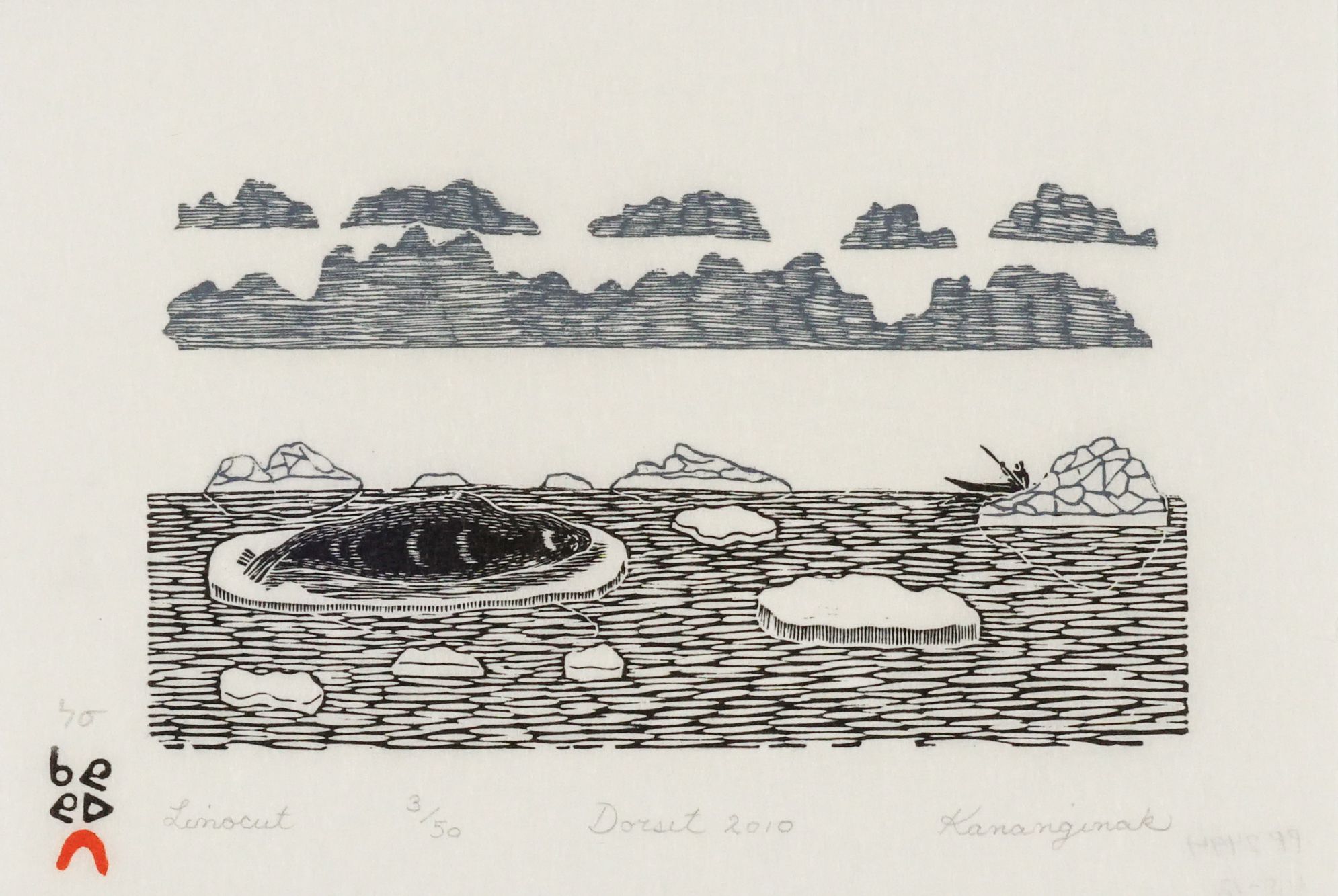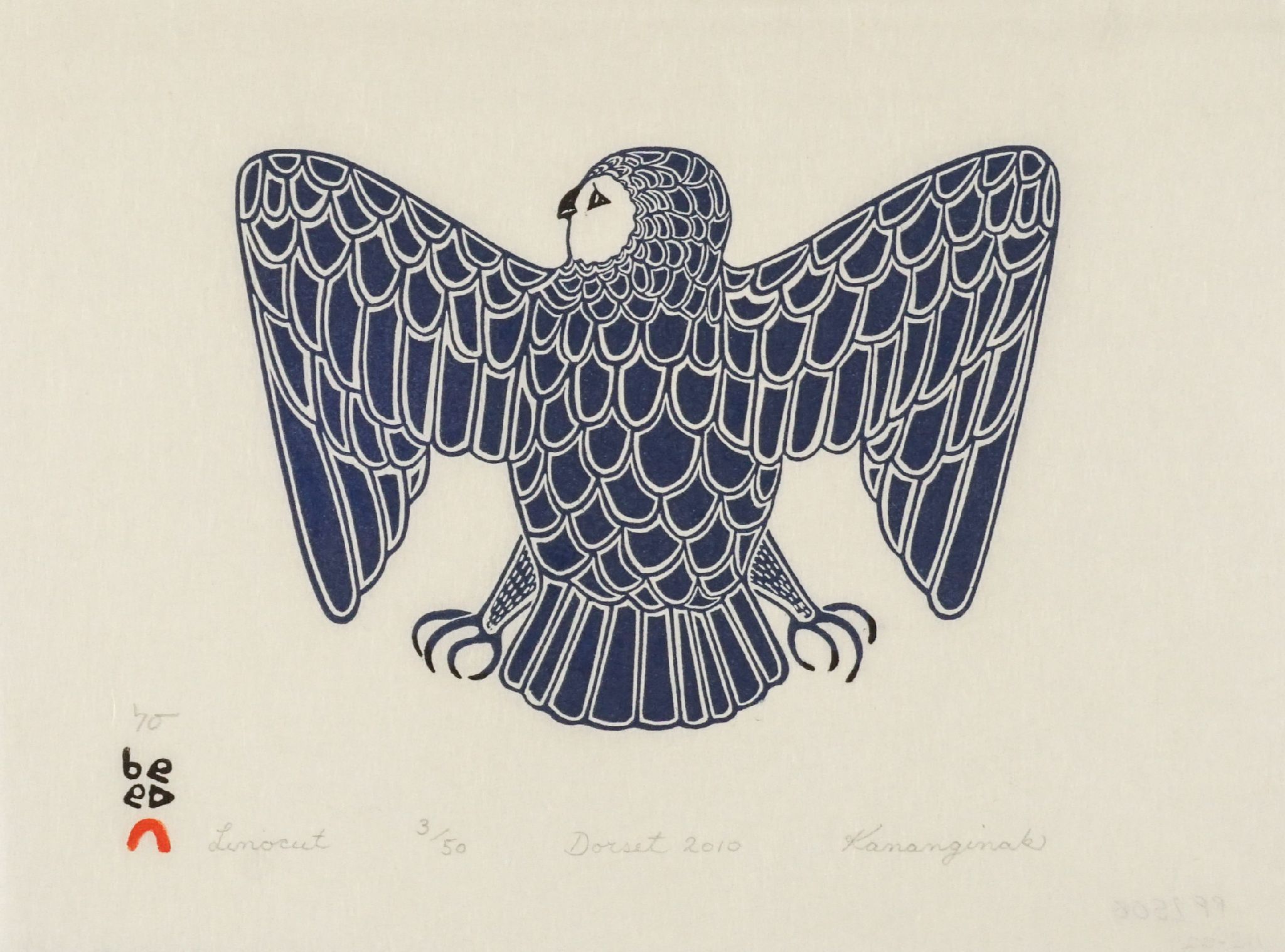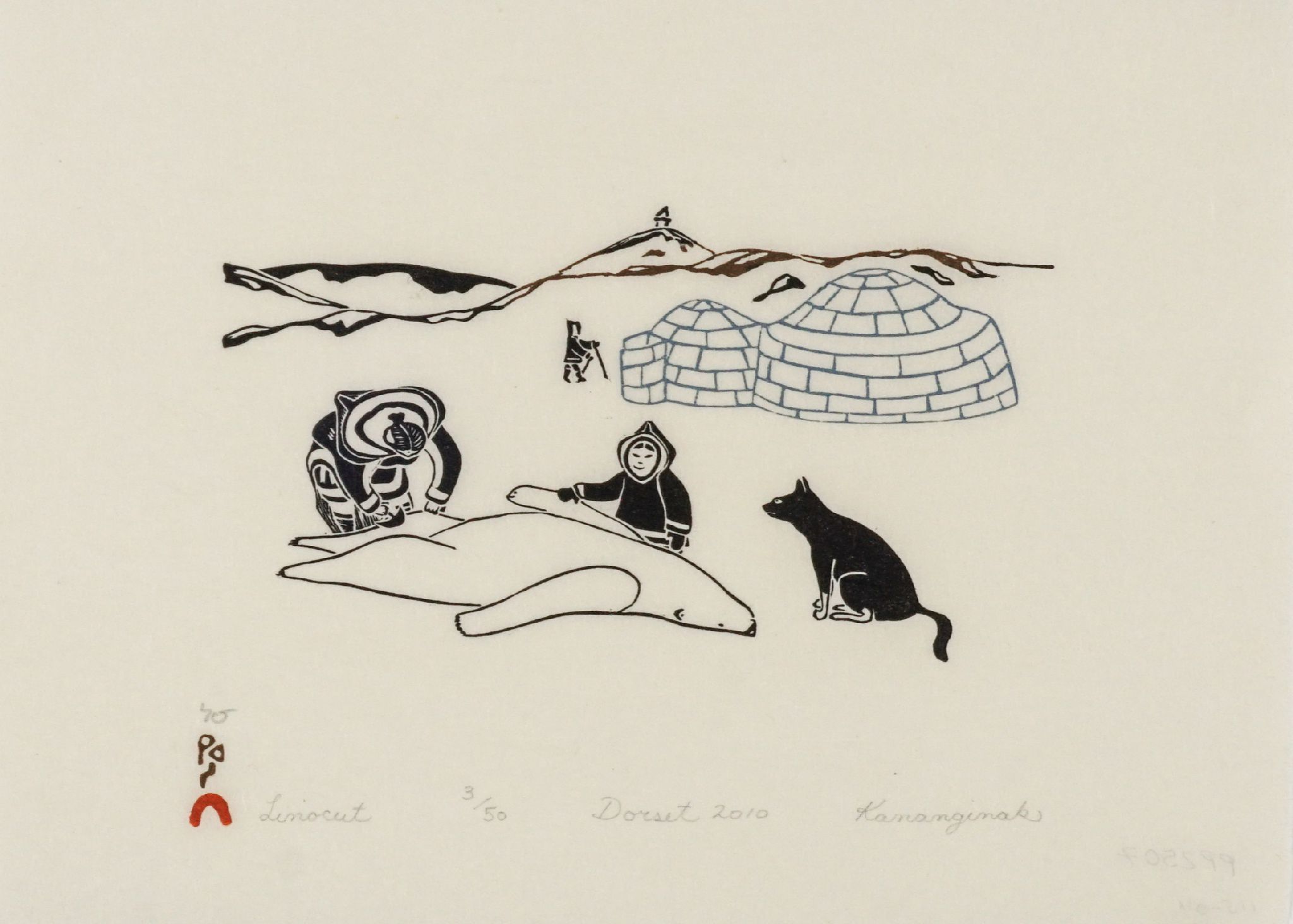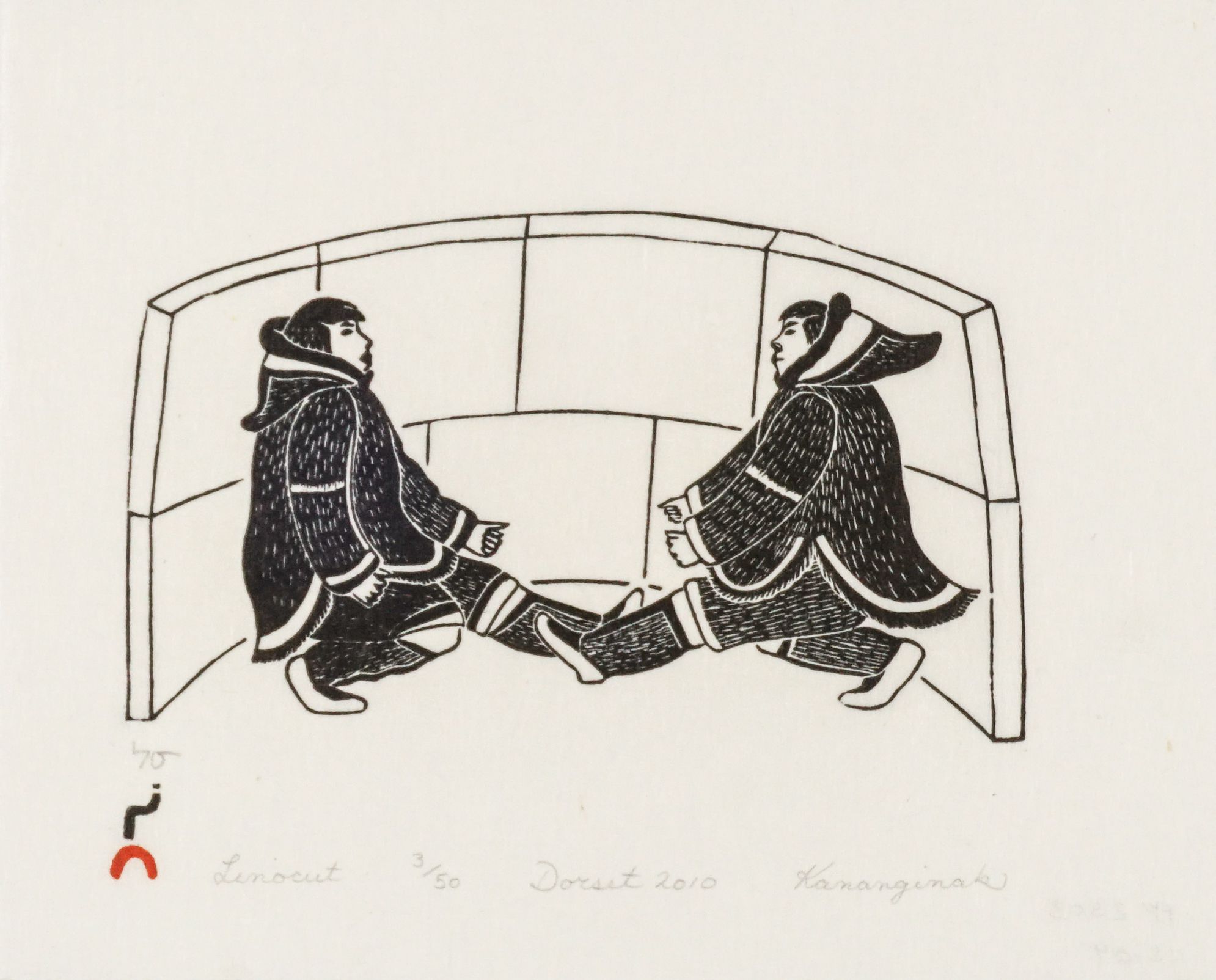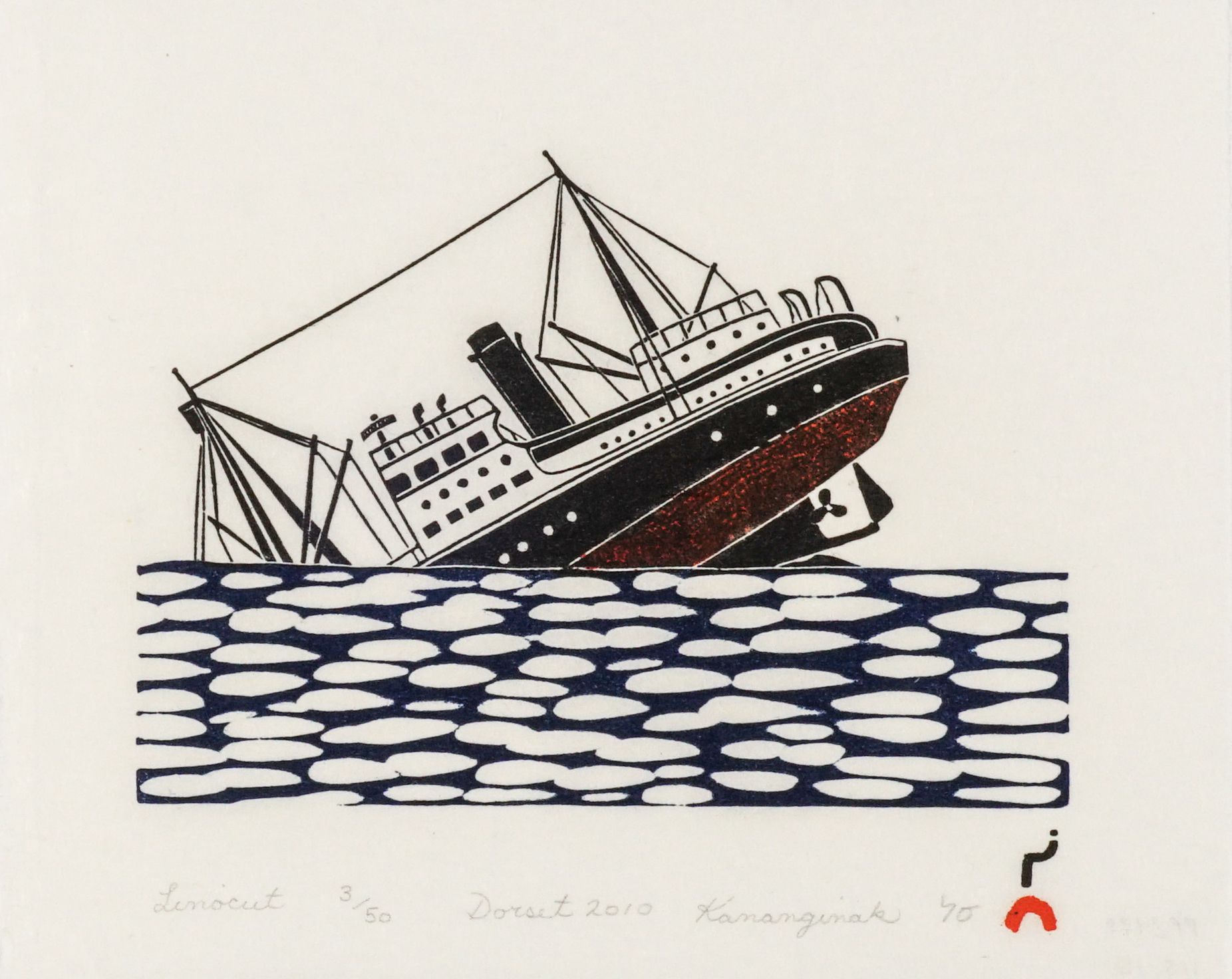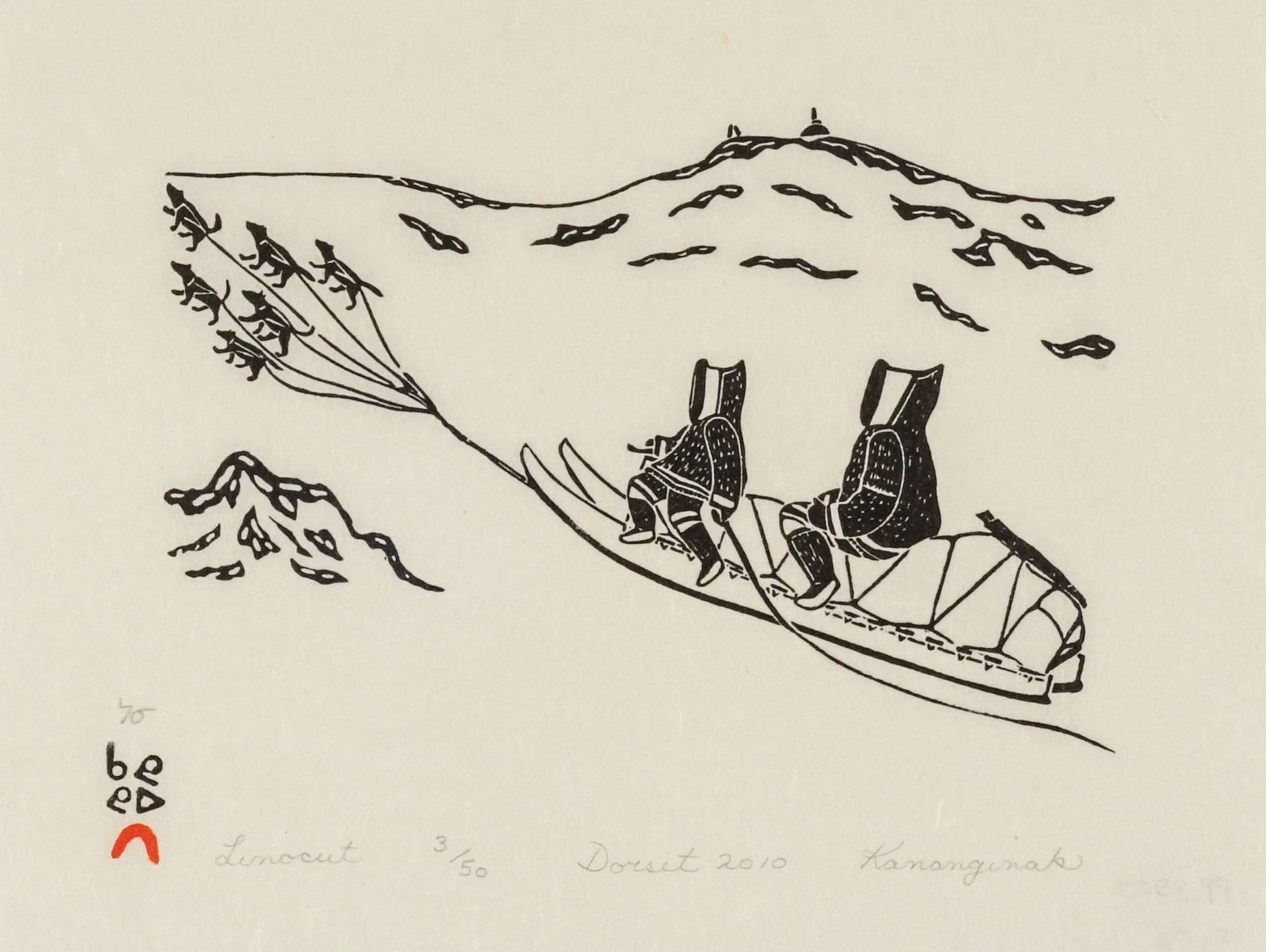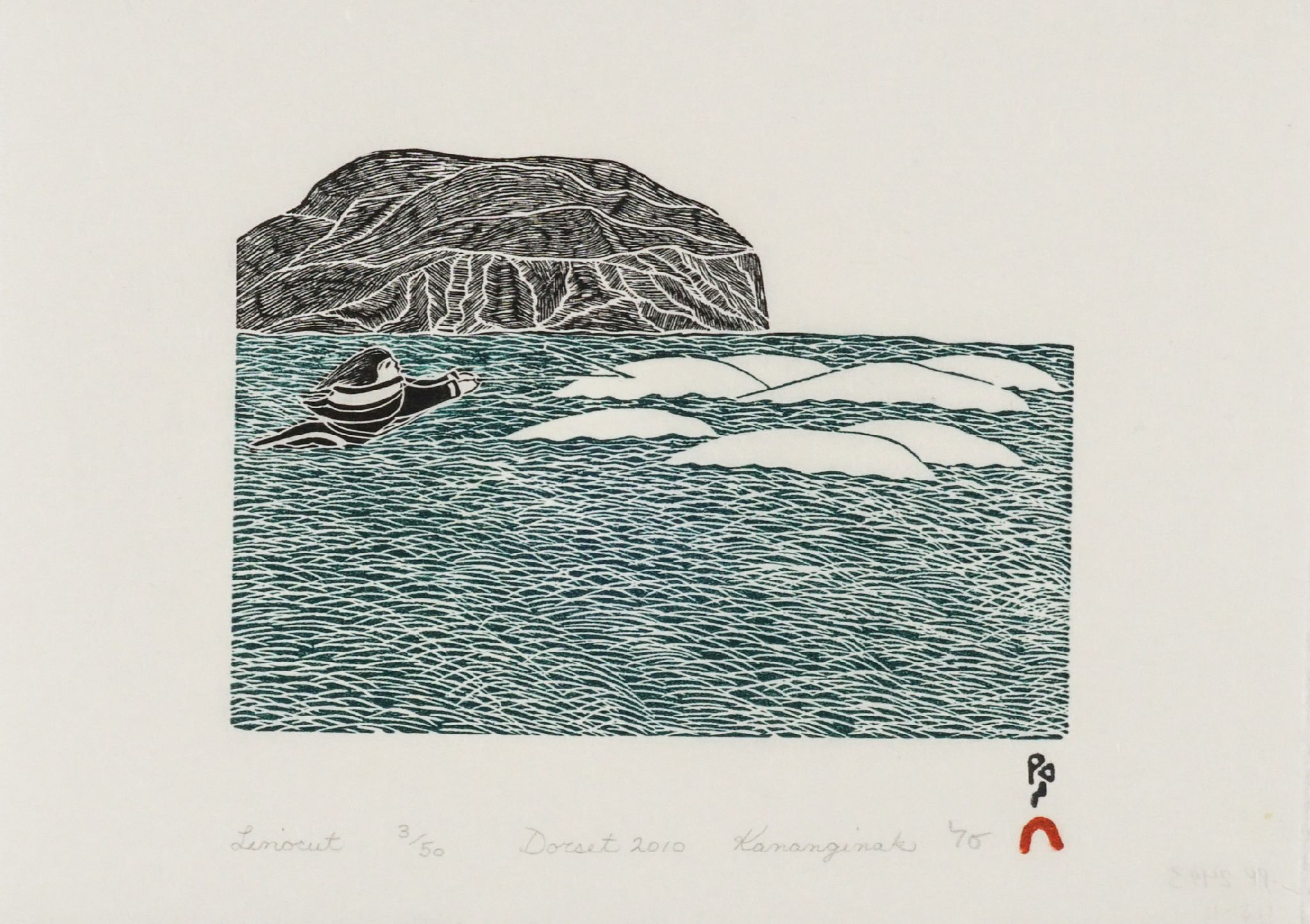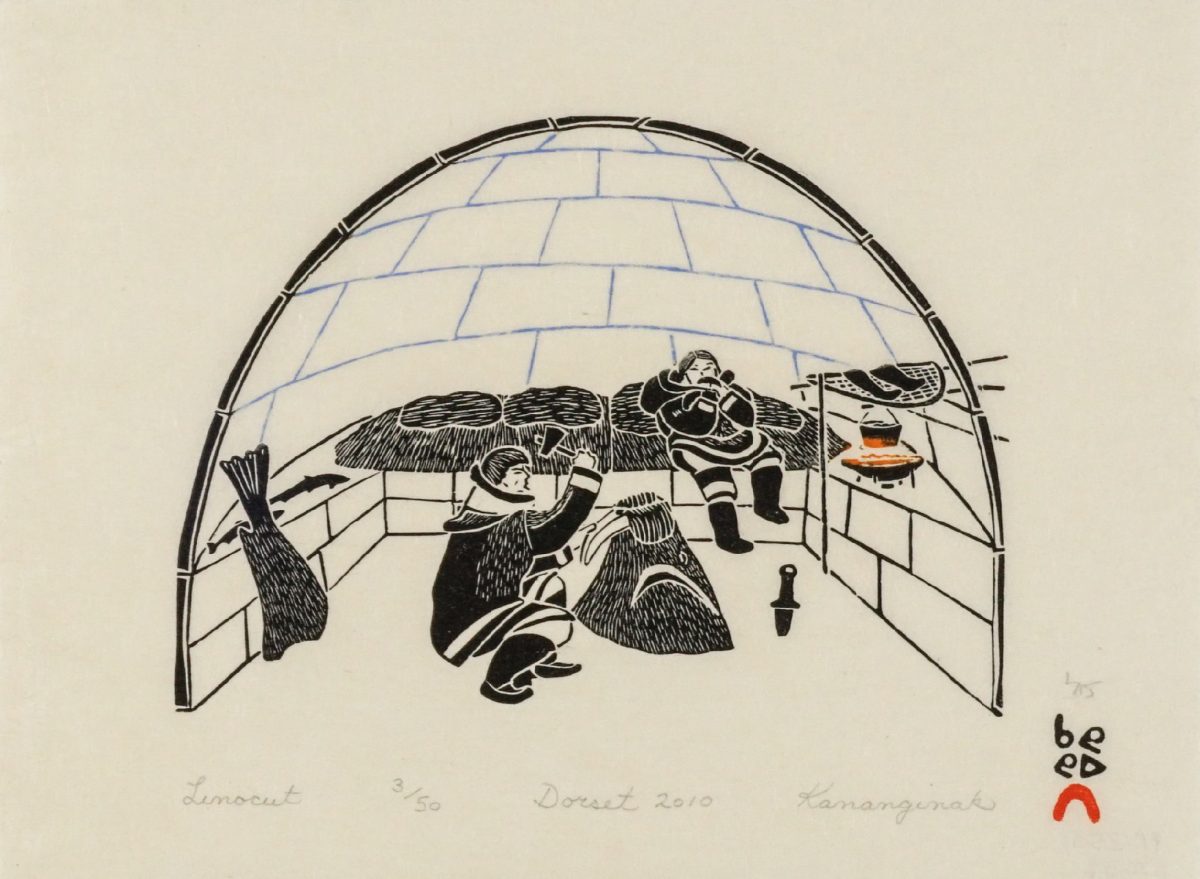Collector's Corner
AULAJIJAKKA (Things I Remember): A Masterpiece from Kananginak Pootoogook’s Series
Kananginak Pootoogook was part of the first generation of Cape Dorset (Kinngait) artists. Besides being a sculptor and a graphic artist, he was a hunter and a trapper. Kananginak drew from his memories of his life on the land as well as his observations of Arctic wildlife to create sculptures, drawings, and prints. He is particularly noted for his depictions of Arctic birds, which has garnered him the appellation“Audubon of the North.” AULAJIJAKKA (Things I Remember), a portfolio of seventeen linocuts that vividly capture the essence of camp and hunting life, was made public in 2011 as the Cape Dorset Spring Folio Print Release and was dedicated to Kananginak Pootoogook, who had recently died in November 2010. All of the linocuts in the series are based on original drawings by the artist and signed posthumously by the artist’s son, Johnny Pootoogook. The prints depict Kananginak’s recollections of his life such as the building of an igloo, playing winter games, butchering sea mammals, hunting seals, traveling by dog sled over the Arctic landscape, fighting off a marauding polar bear, and the sinking of the supply ship Nascopie.
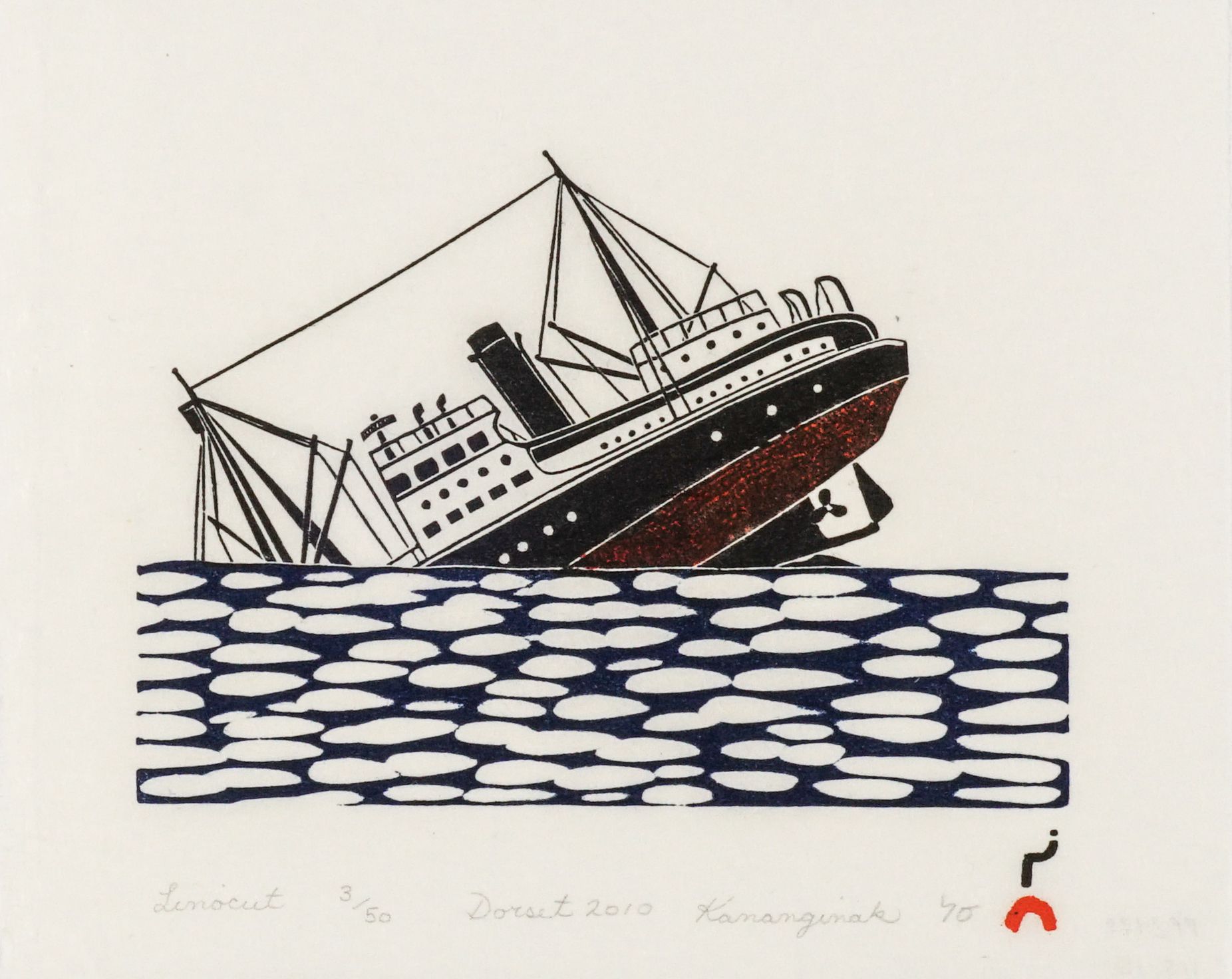
AULAJIJAKKA (Things I Remember) by Kananginak Pootoogook, linocut, ed. 50, Inuit, Cape Dorset, 7.5” x 9.25” (2011). Collection of E. J. Guarino. Image courtesy of Dorset Fine Arts, Toronto, and Arctic Artistry, Chappaqua, NY..
The seventeen linocuts in the AULAJIJAKKA (Things I Remember) series had originally been cut by Kananginak sometime in the late 1970s as part of a topography project but, for some reason, were archived rather than printed. It took thirty years for them to be printed and made available to collectors and museums. Each of the linocuts is small, delicate, and rich in details.
At first, the prints were only sold as an entire collection. However, eventually, a few galleries did sell individual prints. But, by the time I became aware of this development one of the two works that had caught my eye had completely sold out. I did manage to acquire the print depicting the sinking of the Nascopie, which was such an important event in Cape Dorset that it also became a subject for a number of other artists such Napachie Pootoogook and Shuvinai Ashoona. Although to those living outside the Arctic, the wreck of a supply ship may seem unimportant, its destruction had a major impact on Cape Dorset. For people who received goods only once a year, the ship’s loss on July 22, 1947 was historic and potentially devastating so the community spent a great deal of time removing the ship’s contents before they were lost. According to Kananginak, “The people used to celebrate the arrival of the Nascopie as they were happy that they were going to drink tea when they got to the ship. Then in 1947, the ship got grounded and lots of Inuit people got food from the ship – stock that was meant for the store.”
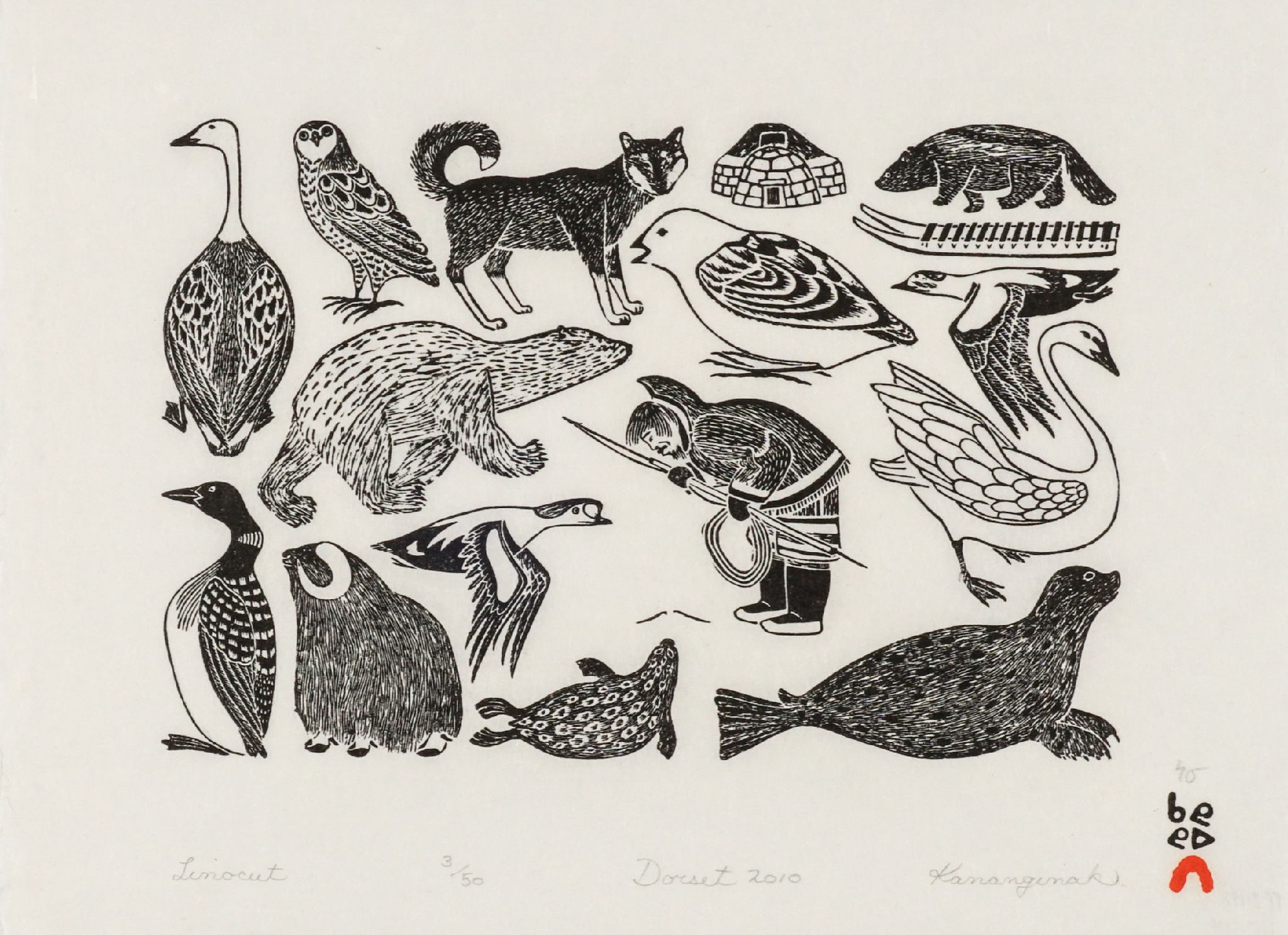
AULAJIJAKKA (Things I Remember) by Kananginak Pootoogook, Cape Dorset, linocut, 9” x 12 1/8” (2010). Collection of E. J. Guarino. Image courtesy of Dorset Fine Arts, Toronto, and Feheley Fine Arts, Toronto.
I very much coveted the print in the series that I was unable to obtain and continually hoped that it would come up for sale, but acquiring it eluded me until recently. Of course, if this were the best of all possible worlds I would have been financially able to acquire all seventeen prints in the series. However, doing so was not an option. The one print that I wanted more than any other was the one portraying an Inuit hunter surrounded by a diversity of Arctic animals. The figure in the print is actually Kananginak Pootoogook; he is bent over in the typical pose of someone standing over a hole in the ice, known as an air hole, waiting for an opportunity to harpoon a fish or a seal. It is quite marvelous how the animals in the print encircle Kananginak, indicating their importance. The artist also included an igloo, a sled and a sled dog – all necessary for survival in the Arctic landscape.
Having lived a traditional lifestyle that relied upon hunting and trapping, Kananginak was a keen observer of Arctic wildlife. His prints and drawings of Arctic mammals and birds have a documentary-like quality because they are so specific. Anyone with knowledge of the creatures in Kananginak’s part of world would immediately recognize the various species portrayed in his art. Of course, for those of us who do not live in the Arctic, some animals are more familiar than others such as polar bears, seals, walruses, whales, geese, and swans. Kananginak Pootoogook, however, had intimate knowledge of his environment. Though I am not an expert, the animals surrounding the artist in the print I acquired appear to be a bearded seal, a ringed seal, a musk ox, a spotted loon, an eider duck, a polar bear, a tundra swan, a Canada goose, a snowy owl, a Canadian Inuit dog, a snow bunting and, just above the sled, a wolverine.
In Inuktitut, the language of the Inuit, aulajijakka means “things I remember.” The prints in AULAJIJAKKA are Kananginak Pootoogook’s posthumous gift to the world. The memories he chose to share through seventeen masterful linocuts are an important part of his artistic legacy. The Inuit way of living, values, and beliefs were constant themes in his work. Kananginak’s art is in major museum collections around the world. In 2017 he was the first Inuit artist to have his work included in the Venice Biennale. Kananginak Pootoogook is a bridge between the early modern Inuit artists, who were chroniclers of an era that is no more, and younger artists who, because of him, are empowered to explore whatever subjects they choose, including those that are controversial. Considered the grand homme of Inuit art, his work has influenced generations of Inuit artists and continues to do so.
To see the entire AULAJIJAKKA (Things I Remember) series, scroll down:
(Note: All images are courtesy of Feheley Fine Arts, Toronto, and Dorset Fine Arts, Toronto.)
